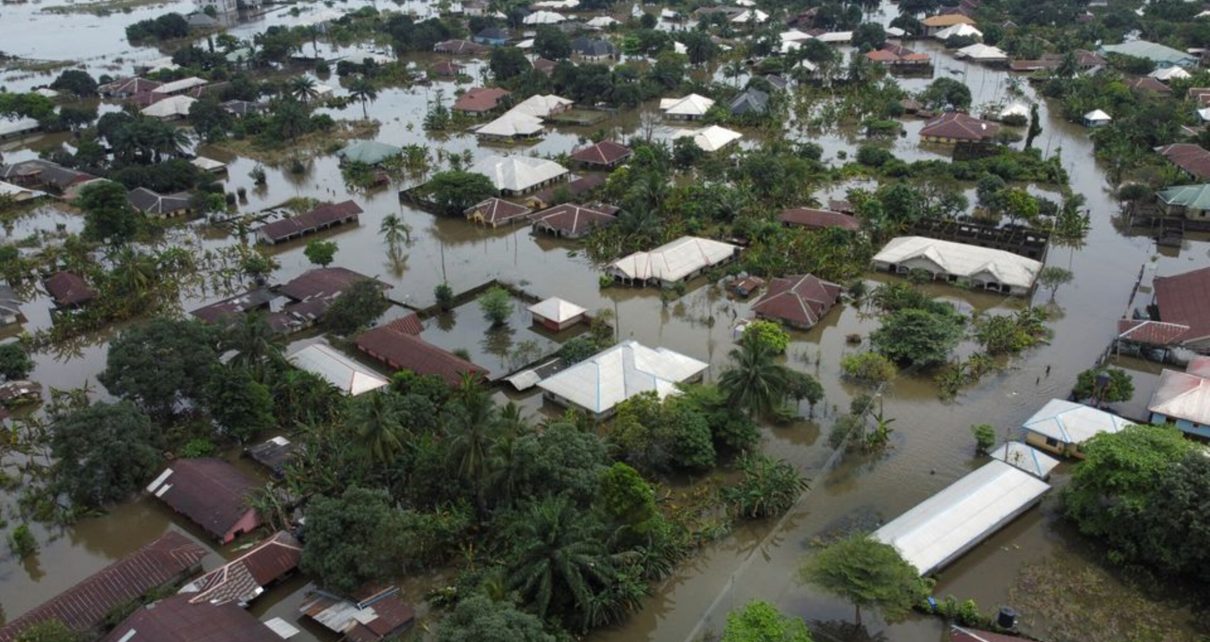A Reuters Analysis
Since June, parts of West and Central Africa have been getting unusually heavy rains for this time of year. This has caused terrible floods that have hurt millions of people and buried farms in 19 countries.
The causes of the flooding as well as information on their impact, according to a Reuters analysis, are explained below.
WHAT SOURCE IS THE WATER FROM?
Between June and September, when seasonal rains sweep over the Sahel band of nations along the southern edges of the Sahara desert, West and Central Africa typically experience floods of variable severity.
While contributing to East Africa’s worst drought in 40 years, the La Nia weather pattern this season brought about above-average rainfall in several areas of the region.
According to United Nations climate scientists, warming temperatures brought on by climate change are also boosting the intensity and frequency of Africa’s rains.
Ineffective urban planning, clogged waterways, and land degradation exacerbated their effects this year. Water systems immediately became overwhelmed, which had devastating effects.
“The climate element is only one ingredient,” said flood specialist Andrew Kruczkiewicz of Columbia University’s Climate School.
“The term natural disaster is not really used anymore … (It) is seen as an oversimplification …when you really have to look at the overall socio-economic system.”
WHAT HAS THE FLOODS’ IMPACT BEEN SO FAR?
According to the U.N.’s World Food Programme, by mid-October, the floods had impacted 5 million people and 1 million hectares of crops in an area where 43 million people had already experienced famine during the lean season of June to August.
Rising seas in Nigeria have resulted in at least 600 fatalities, more than 1 million displaced residents, and a worsening cholera outbreak.
The U.N.’s Food and Agriculture Organization (FAO) reported last week that over 19,000 head of cattle were lost and 18 out of Chad’s 23 regions had been inundated.
The rains in Senegal and Sierra Leone’s major cities have triggered deadly flash floods along the coast of West Africa.
According to the U.N. humanitarian office OCHA, severe rainfall caused rivers in Cameroon’s Far North area to overflow, displacing tens of thousands in September.
Since certain places might benefit from seasonal flooding, it is difficult to evaluate the immediate impact on agriculture.
However, because of the floods and other factors, the FAO forecasts a 3.4% decrease in the region’s cereal production.
WHY HAVE SOME COUNTRIES BEEN SO HARDLY AFFECTED?
The heaviest rains in 30 years were seen in Chad, which is towards the bottom of the Notre Dame global adaptation index assessing countries’ susceptibility to extreme climate events.
According to Chadian hydrologist Hamit Abakar Souleyman, they overwhelmed the water table and caused Lake Chad, which is shared by Chad, Cameroon, Niger, and Nigeria, to rise above river levels.
The Logone and Chari rivers were unable to empty into the lake as a consequence, and they burst their banks, drowning the border towns of Kousseri in Cameroon and N’Djamena in Chad.
According to the disaster service of that nation, the Benue River, which runs from Cameroon to Nigeria, rose so high that Cameroonian officials had to release water from the Lagdo Dam, increasing flood threats downstream, particularly in Nigeria.
A large portion of Nigeria was also affected by heavy rains, which were made worse by bad planning, according to experts, which enabled a fast-expanding urban population to construct buildings on flood plains, destroying the wetlands that would otherwise serve as a natural barrier.
Therefore, regardless of how little or much rain falls, there is less infiltration and greater runoff, which leads to floods, according to Ibidun Adelekan, a geography professor at Nigeria’s University of Ibadan, who contributed to the U.N. climate report’s February 2022 release.
She said that greater dredging of significant rivers would also be helpful, saying that there was plenty that could be done to prevent people from building simply anyplace.



